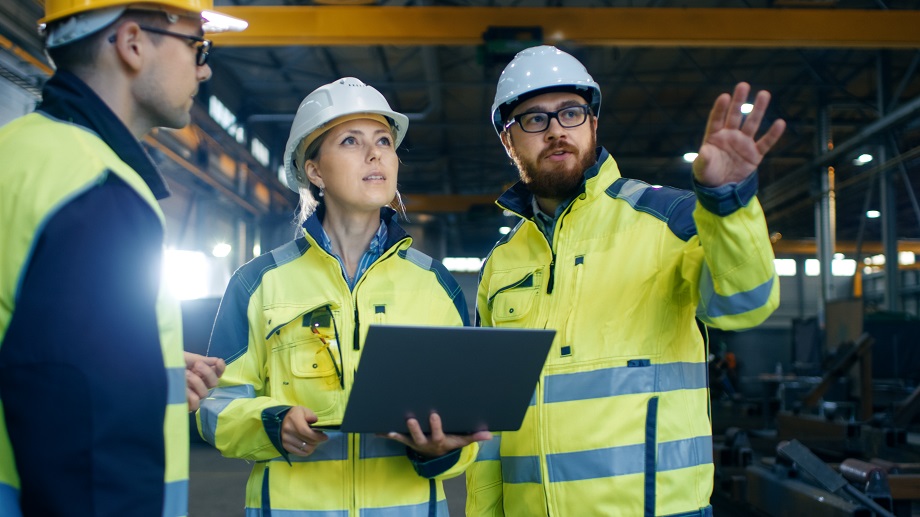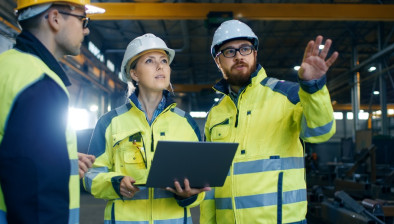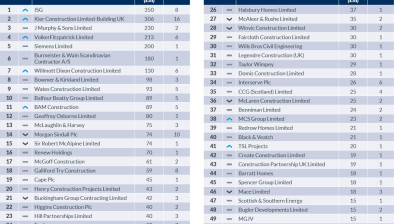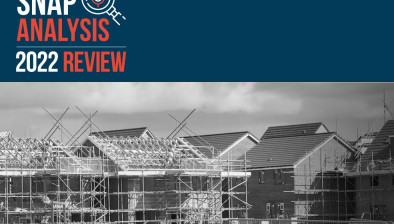Report series to tackle combined impact of digitalisation, decarbonisation, and demographics on construction industry
Barbour ABI and the Chartered Institute of Building (CIOB) have launched a new report series on the combined effects that digitalisation, decarbonisation, and demographic changes will have on the construction industry.

The organisations argue that there are three major forces that are due to shape the built environment over the next 20 years: digital technologies, climate change and demographic shifts. Construction has a major role to play, a moment to shine, turning powerful threats into forces that shape a better Britain. The answer lies not simply in technical fixes. The needs of people and communities must be central. Ultimately, a long-term vision is required. What is built today will shape the lives of generations to come.
The ‘Recreative Construction’ series bought to you by Barbour ABI and the CIOB and authored by Brian Green, experienced construction industry commentator will release new reports over the next month tackling the topics that will shape the future of the built environment in detail.
The series clearly sets out how the wider industry, in conjunction with society, has incredibly difficult choices to make. These decisions will not just influence the next ten years but will also lay foundations for generations to come. The next couple of decades will test the construction sector. If the industry is to meet the challenges ahead with success, the analysis suggests that there is a lot of scope for improvement, not solely in the industry’s technical capabilities and its resources but also within its culture. This series steers clear of being overly prescriptive. Instead, it provides an essential background and context that help to recognise potential fault lines that lie within the wider construction sector and the way it has historically tended to approach challenges.
There are many powerful messages within the series. Such as treating the challenges of technology, an ageing population, and climate change collectively rather than separately to search for effective overall solutions. It is important to take a longer-term view and recognise that what is built today can have long-lasting effects. That it helps to look back at the mistakes made and learn from them. Most importantly, that the industry needs to always keep in mind that its ultimate purpose is to create buildings and infrastructure that serve the needs of, and improve the quality of, people and society.
Mark Beard, president of the CIOB, said: “Recreative Construction asks fundamental questions about the impacts of digitalisation, decarbonisation and demographic change and the need to radically reshape the built environment in response.“The series highlights the case for a more connected approach across the construction sector. It illustrates why the environmental, social, technical and economic problems generated by the enormous change ahead must not be met as isolated challenges; they are interlinked. This suggests the broader construction sector needs a step change in thinking and to widen its intellectual and skills base.
“Such a change would allow us to reach beyond our current reliance on traditional solutions as we seek answers to very difficult and complex social and technical questions. The CIOB’s view has always been that when we build, we shape the future for people; appreciating the needs of people and their communities should be central to our thinking.”
Tom Hall, chief economist at Barbour ABI and AMA Research, said: “Recent events have pulled a veil back, challenging longstanding assumptions: the ability to work from home, the importance of having a well-funded health service, and the value of certain jobs relative to others to name just a few.
“We are all used to warnings over climate change. The next 20 years will be critical to mitigate and adapt. Meanwhile the UK has a rapidly ageing population and infrastructure in serious need of investment.
“The construction industry will have a very significant part to play. Making the right choices over what gets built, where and how are going to be critical.
“Brian Green’s series of articles is a timely contribution: drawing the threads together, outlining the issues and suggesting a set of principles that will lead to the best possible outcomes. Ultimately, we need a built environment that works for people.
“We all have an interest to ensure what we build today delivers the right built environment for us, our children and our children’s children. Let’s take that opportunity.”























